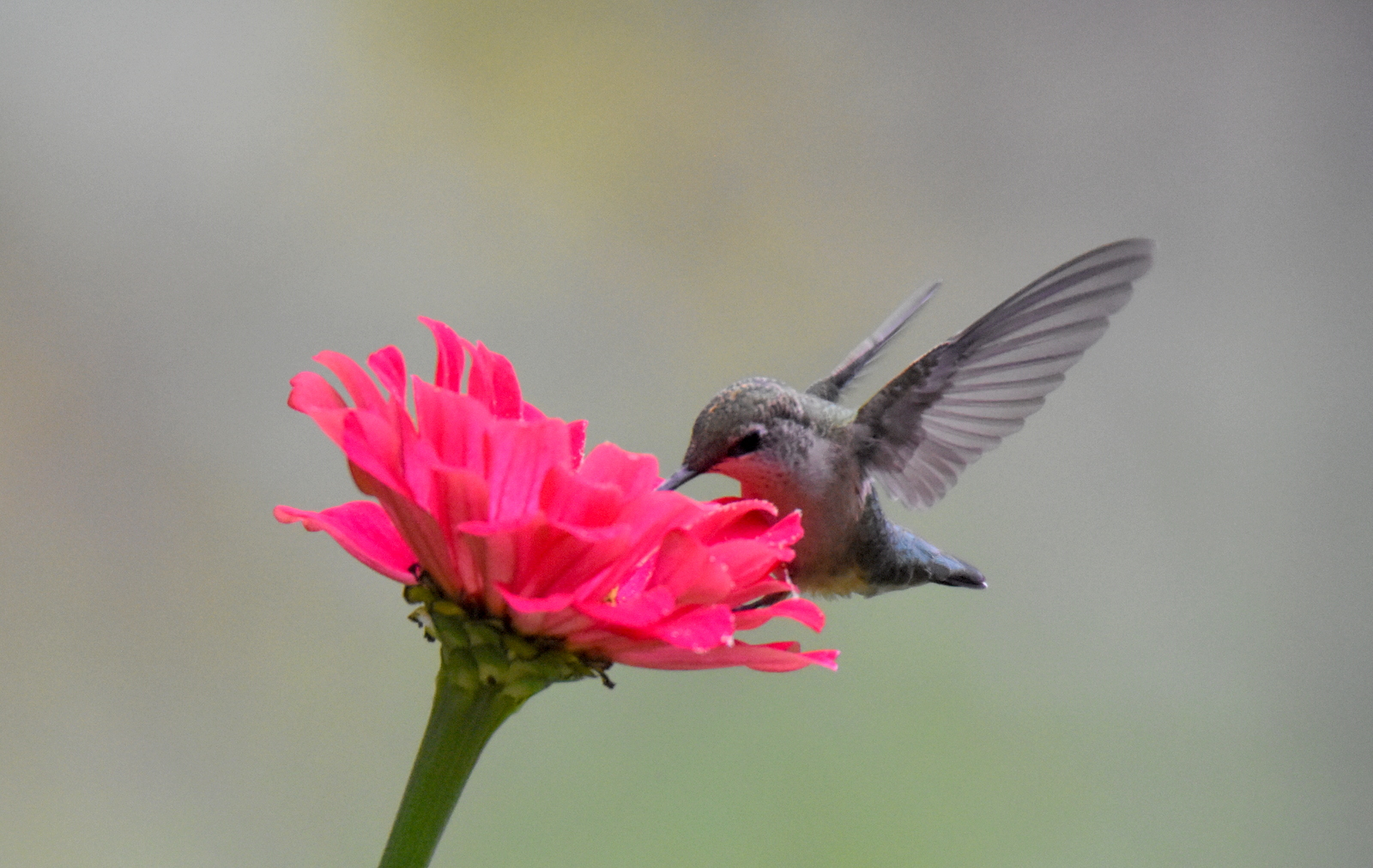Hummingbirds
Garden Clippings for September 10, 2022
The hummingbirds in our backyard have been on a feeding frenzy in the last few days. They continuously dart from flower to flower, disappearing as quickly as appearing.
Rozanne, my sister-in-law, who knows far more about birds than I ever will, tells me that hummingbirds fatten themselves up at the end of summer so they have adequate strength to make the trip south in coming weeks. Some will leave as early as the end of August and the last will depart in early October.
The journey south to Mexico and into South America is an arduous one. Hummingbirds fly solo, rather than in a flock. They will fuel up along the way by eating insects and finding nectar in wildflowers and gardens.
Hummingbirds’ flight north again in spring is equally long and difficult. They mostly fly low so they can find food and shelter but will gain altitude to take advantage of wind patterns. The Gulf of Mexico presents a dilemma for hummingbirds. Flying over the Gulf is a 500 mile trek with no access to food, while flying around the Gulf and over Mexico adds many miles to the journey.
Young hummingbirds manage the flight without GPS, and without having done the trip before. Remarkably, they might return to their same address and postal code as their previous year.
Creating a haven for hummingbirds is easily within reach for home gardeners. A hummingbird garden need not be big but should have the following four ingredients: water, shelter, a place to sleep and food.
A bird bath or water garden is great for birds, but not much good for hummingbirds. Instead, a slow drip, a mister or shallow rock crevice are better ways to provide water. August and September’s morning dew provides daily moisture on leaves and grasses.
For shelter, a variety of small trees and shrubs are safe spots and provide protection from inclement weather and predators. In my backyard, the hummingbirds constantly fly back and forth from the Pine trees above to the flowers below.
Hummingbirds won’t look for or build a traditional nest or bird house, but rather will sleep on stems, wires, lumber or other unusual spots. They often use abandoned spider webs for nesting material.
As for food, hummingbirds rely on a continuous supply of bugs and nectar. Our backyard is full of irresistible nectar-rich flowers in a variety of heights and colours. Annuals and summer flowering perennials are their favorite.
Every gardener will have their own favorites for hummingbirds but anything brightly coloured, especially in orange, pink and red, will surely do the trick. For annuals we find Lantanas are a number one choice, followed by Hibiscus and Petunias. Other good annuals are Zinnias and Salvias.
In the perennial garden, our Bea Balm, which flowers in June and July is a haven of hummingbird activity. Hosta, Columbine, Butterfly Bush, Foxglove, and Blazing Star carries the weight through the rest of summer.
For hummingbirds, variety is the spice of life. Fortunately for us, the yard next door is a lovely hodgepodge of trees, flowers, evergreens, grass and vegetables, certainly contributing to the birds and wildlife in the neighbourhood. The folks next door also put up a few colourful hummingbird feeders.
Finally, make sure your yard is insect friendly. Avoid the use of pesticides. The same variety of plants and flowers that attract hummingbirds will also make a fine habitat for insects.


